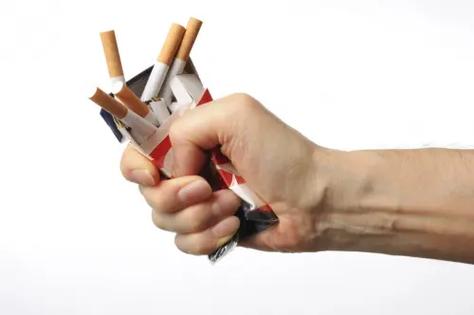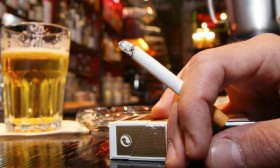Detrimental Impact of Cigarette Smoking on Postoperative Wound Tensile Strength
Abstract
The process of wound healing is a complex and meticulously orchestrated biological sequence crucial for recovery after surgical intervention. Among the numerous factors that can impede this process, cigarette smoking stands out as a significant and modifiable risk factor. This article delves into the specific detrimental impact of smoking on a critical aspect of wound integrity: tensile strength. It explores the multifaceted pathophysiological mechanisms through which the toxic components in cigarette smoke—primarily nicotine, carbon monoxide, and hydrogen cyanide—disrupt the normal phases of healing, leading to weakened wounds susceptible to dehiscence and other complications. Understanding this relationship is paramount for both healthcare providers and patients in optimizing surgical outcomes.
Introduction
Successful surgical recovery is heavily dependent on the body's ability to repair incised tissue effectively. The ultimate goal of this repair is not merely to close the defect but to restore the tissue's mechanical properties, most importantly its tensile strength—the maximum stress a wound can withstand while being stretched before it tears. A wound with compromised tensile strength is at a higher risk of dehiscence, hernia formation, and poor cosmetic results. While factors like nutrition, age, and comorbidities play a role, cigarette smoking is a pervasive external factor that directly and profoundly undermines the wound's journey to achieving robust strength. This article synthesizes current understanding of how smoking chemically and physiologically sabotages this vital process.
The Phases of Normal Wound Healing and Tensile Strength Development
To appreciate smoking's impact, one must first understand the normal timeline of healing and strength acquisition:
- Inflammatory Phase: Immediately after injury, hemostasis and inflammation initiate the process. Platelets and inflammatory cells clear debris and release cytokines and growth factors crucial for the next stages.
- Proliferative Phase: This phase involves the formation of granulation tissue, re-epithelialization, and angiogenesis (new blood vessel formation). Fibroblasts are the key players, synthesizing collagen—the primary structural protein that provides tensile strength. Initially, collagen is deposited in a random, disorganized manner.
- Maturation (Remodeling) Phase: This longest phase, which can last over a year, is where tensile strength is truly developed. The disorganized collagen is continuously broken down (by matrix metalloproteinases, MMPs) and re-synthesized into a more organized, cross-linked structure. This cross-linking is fundamental to increasing the wound's mechanical strength. A healed wound never regains 100% of its original tensile strength, typically plateauing at around 80%.
Smoking disrupts each of these meticulously balanced phases.
Pathophysiological Mechanisms: How Smoking Weakens the Wound
The combustion of tobacco produces over 4,000 chemicals, many of which are toxic to wound healing. The primary culprits are:
1. Nicotine-Induced Vasoconstriction and Hypoperfusion
Nicotine is a potent sympathomimetic agent. It stimulates the release of catecholamines (e.g., epinephrine), causing widespread vasoconstriction, particularly in the microvasculature of the skin. This dramatically reduces blood flow to the surgical site. Oxygen and essential nutrients (like Vitamin C, a cofactor for collagen synthesis) cannot be delivered efficiently to the healing tissues. Similarly, waste products accumulate. This state of tissue hypoxia and ischemia is disastrous for fibroblast proliferation and collagen production, directly stunting the development of tensile strength from the earliest stage.

2. Carbon Monoxide (CO) and Impaired Oxygen Delivery
Carbon monoxide has an affinity for hemoglobin that is over 200 times greater than that of oxygen. It binds irreversibly to hemoglobin to form carboxyhemoglobin, effectively reducing the oxygen-carrying capacity of the blood. This systemic hypoxia exacerbates the local hypoxia caused by nicotine. Fibroblasts and immune cells are highly metabolic and require ample oxygen to function. In an oxygen-deprived environment, their activity is severely curtailed, leading to inadequate and poor-quality collagen deposition.
3. Disruption of Cellular Functions and Collagen Metabolism
Smoking creates a hostile biochemical environment:
- Increased Platelet Aggregation: Nicotine promotes hypercoagulability, potentially leading to microthrombi that further compromise capillary blood flow.
- Impaired Fibroblast Function: Studies show that nicotine and other smoke constituents can directly inhibit fibroblast migration, proliferation, and collagen synthesis.
- Altered Protease Balance: Smoking upregulates the expression of matrix metalloproteinases (MMPs), enzymes that break down collagen. Simultaneously, it decreases the levels of tissue inhibitors of metalloproteinases (TIMPs). This imbalance leads to excessive collagen degradation, preventing the stable collagen matrix needed for strength from ever properly forming.
- Oxidative Stress: The abundance of free radicals in smoke causes oxidative damage to cell membranes and proteins, further impairing cellular function and promoting a pro-inflammatory state that delays progression to the proliferative phase.
Clinical Evidence and Implications
The biochemical alterations translate directly into tangible clinical outcomes. Numerous clinical studies across various surgical specialties—from general surgery (e.g., laparotomies) to plastic, orthopedic, and oral surgeries—have consistently demonstrated that smokers have significantly higher rates of wound complications. These include:
- Wound dehiscence
- Incisional hernias
- Superficial wound infections
- Skin flap necrosis
- Delayed union or nonunion of fractures
Histological studies of wounds in smokers show less collagen content and disorganized architecture compared to non-smokers.
Conclusion and Recommendation
The evidence is unequivocal: cigarette smoking significantly reduces postoperative wound healing tensile strength through a concert of mechanisms centered on vasoconstriction, tissue hypoxia, and direct cellular toxicity. The result is a structurally weak wound, vulnerable to complications that can prolong recovery, increase healthcare costs, and cause significant patient morbidity.
The most critical intervention is smoking cessation. Research indicates that cessation for even 4-8 weeks preoperatively can markedly improve wound healing outcomes by allowing the body to clear toxins, reduce systemic inflammation, and restore microvascular perfusion. Anesthesiologists and surgeons must actively screen for smoking status, educate patients on these specific risks, and provide robust resources and referrals for cessation programs. For the patient, quitting smoking is one of the most powerful actions they can take to ensure their own surgical success and secure a strong recovery.









